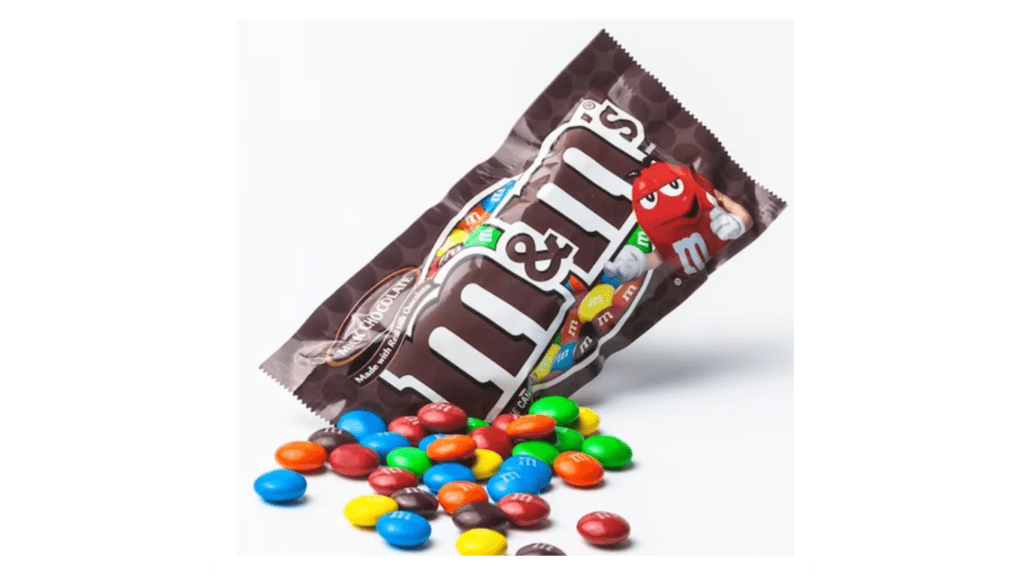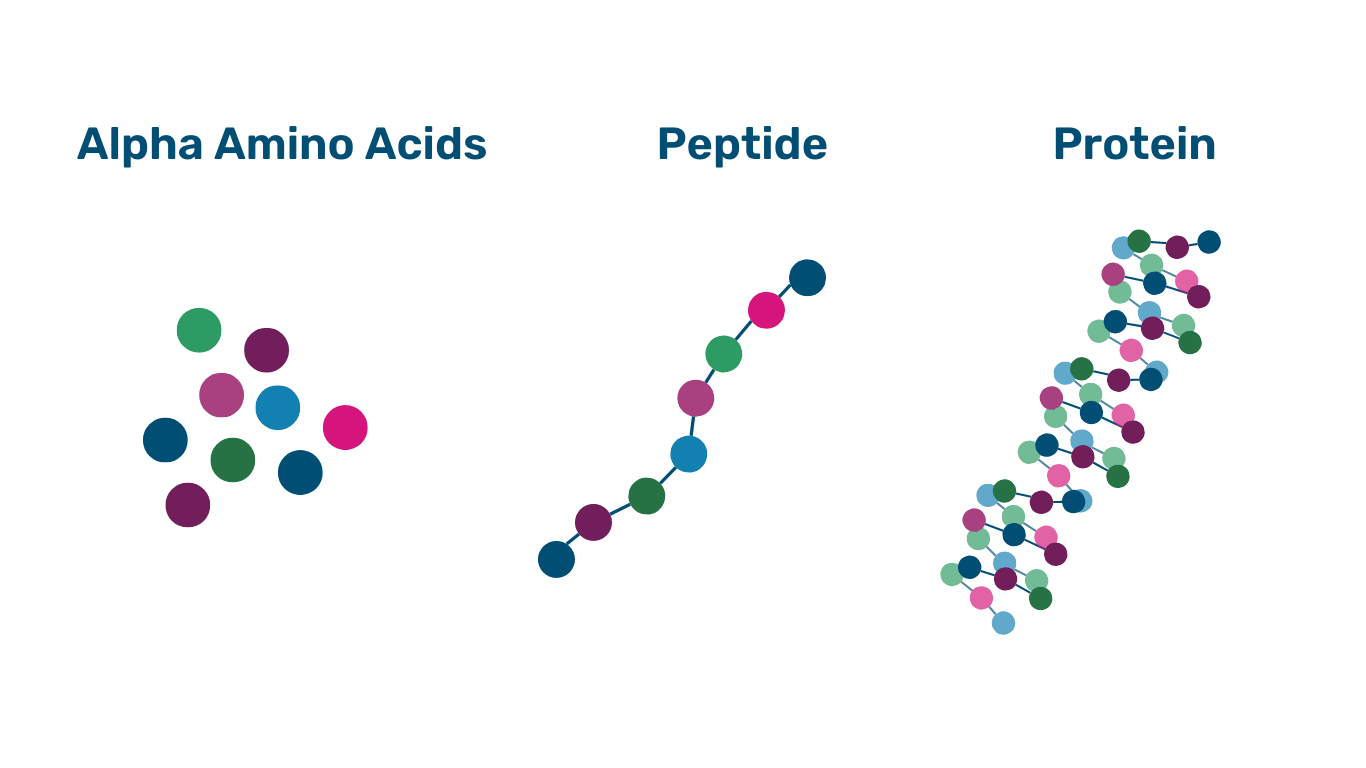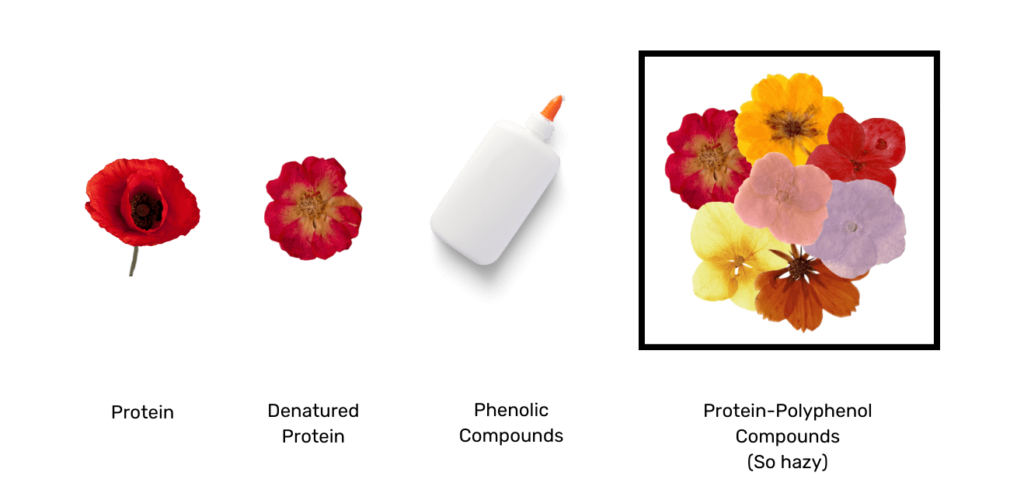Vines, Wines, and Protein Haze

It is spring of 2023 and we have gotten one question a lot recently:
Why is my wine so protein unstable this year?
Something about the 2022 growing year on the East Coast put an excessive amount of stress on certain vineyards and varieties – more so than in years past. We started digging into why so many samples we were receiving were requiring higher than normal bentonite additions and found an awesome review article about haze causing proteins. However, the article is VERY tedious to read. You are more than welcome to give it a shot, but we thought we might break it down for you – and save you a lot of time. Just a heads up, though, this post is still pretty technical and dense. We did our best.
Quick Facts
- Pathogenesis-related (PR) proteins, mainly thaumatin-like proteins and chitinases, are the main culprits of protein haze
- They are formed after veraison and increase in concentration during berry maturation
- Concentrations can increase with the presence of pathogenic and/or environmental stressors
- Grape variety, growing region, and year have a greater impact on haze potential than vinification processes
- Other wine components such as pH, polysaccharides, metal ions, and phenols likely play a role in haze production
- There is no correlation between the total amount of protein present and protein instability (haze production)
- Haze increases when protein-phenolic interactions create large, insoluble compounds; reducing phenolics will reduce haze
- Sodium bentonite is the most effective treatment for protein instability in wine
Proteins in Wine

Off the bat, you should know that there is no correlation between the total amount of protein present in a wine and the wine’s protein instability potential. Research finds that proteins with low isoelectric points and low molecular weights are more likely to be responsible for haze and are more sensitive to heat denaturation – which causes even more haze. So unless you know what kinds of proteins make up your total concentration, knowing the total number isn’t helpful here. (Like buying a pack of M&M’s, you know how many you have, but that doesn’t tell you how many are red.)
Isoelectric Point
The pH at which a particular molecule carries no net electrical charge. A protein with a low isoelectric point indicates that the amino acids that make up the structure are largely acidic. A high isoelectric point indicates that the amino acids are largely basic.
The main proteins that have been found responsible for haze production are pathogenesis-related (PR) proteins. Grapes naturally start producing PR proteins, primarily in the skins, once they hit veraison and will continue to do so throughout ripening. However, the quantity will vary depending on external stressors which cause the grapes to increase their PR protein production as a defense mechanism. Some stressors include climatic changes, such as higher temperatures, or pathogenic infections (bacterial or fungal). In response, the grapes will emit greater quantities of PR proteins leading to a higher probability for wine protein instability.
Potential Vine Stressors
- Some PR proteins have been found to have antifungal properties, which correlates with their expression during times of pathogenic stress. It has also been found that wine produced from lots with significant amounts of powdery mildew (>30% of clusters) have higher levels of haze following heat trials (thus requiring more fining agent). That was not the case with Botrytis which, it has been theorized, produces a proteolytic enzyme that degrades PR proteins. If this is true, there is potential for this enzyme to replace the use of bentonite for protein stabilization in wine. More research is forthcoming.
- Some vintners have observed higher haze development in drought years, but drought does not seem to stress grapes into producing more PR proteins. Rather, the concentration in the juice is higher because there is a smaller volume of liquid produced. The number of PR proteins remains consistent but the concentration changes with the volume. (If you remove all of the blue M&M’s, you have fewer total M&M’s but still the same number of red.)
- The harsher nature of mechanical picking combined with transportation has shown an increase in PR proteins in the juice compared to hand-picked clusters. There does not seem to be additional creation of PR proteins, that appears to stop once the cluster is picked, rather, there is an increase in the extraction of PR proteins from the skins and solids from broken grapes during transportation. This is also the case for any juice with extended exposure to must solids.
Haze Producing Proteins in Wine

PR proteins may include β-glucanases, invertases, chitinases, and/or thaumatin-like proteins. These structures are resistant to breakdown into peptides and amino acids by proteolysis (chemical or enzymatic reactions), low pH, and heat. Chitinases and thaumatin-like proteins are the main soluble PR proteins present in grapes. They each contain a significant number of disulfide bonds which makes them quite chemically stable.
Chitinases have an elliptical secondary structure which makes them temperature and pH sensitive and more likely to precipitate out in wines during vinification. Thaumatin-like proteins have a globular secondary structure making them fairly pH stable and are mainly responsible for protein hazes that cannot be removed from wine. Due to bisulfite’s ability to cleave disulfide bonds in the proteins, SO2 additions have shown some impact on permanent denaturation and aggregation of thaumatin-like proteins which would reduce haze. However, at this time, detailed research on SO2 additions and protein stability is minimal.
In addition to the presence of problematic thaumatin-like proteins, wine haze concentration can also be influenced by phenolic compounds (anthocyanins, tannins, etc.) interacting with seemingly innocuous denatured proteins. The amount of protein haze produced in a wine is highly dependent on which proteins and phenols are present and at what ratios. Phenolic compounds increase haze by cross linking denatured proteins and creating larger, more stable, insoluble compounds. Removing phenolic compounds will reduce haze development. The turbidity of a protein-polyphenol complex will also increase as pH rises.
Wow, that was a mouthful of jargon. Let’s pretend proteins are flowers. When you press (aka denature) them, you maintain the composition of the flower but change its structure into something more fragile. If you take multiple pressed flowers and glue them together to make an arrangement, you create a larger structure that takes up more workspace (aka more haze in the wine). The glue here would be the phenolic compounds. If you don’t have glue, the arrangement won’t stay together and will take up less workspace (aka less haze formation).

I don’t know what pH would be in this analogy, but just remember, higher pH = more pressed flower/glue “haze”. Maybe it is a group craft project and the more people crafting (aka higher pH) leads to more pressed flower arrangements. …Not sure that rabbit hole was more helpful than the original jargon, but I’ll tell myself I’m helping my mother understand what the hell I research all day.
Something to think about: Since white wines have lower concentrations of phenolic compounds, we tend to worry less about these reactions and their impact on haze. However, white wines are not free of phenolic compounds so it is worth discussing and considering.
Cleaning Up Wine Haze
The last thing to mention are the methods for reducing protein haze. Ultrafiltration and flash pasteurization are highly effective at removing the proteins, but are also likely to change other natures of the wine – such as color, aroma, flavor, mouthfeel, etc. High hydrostatic pressure is also effective at increasing the proteins’ thermal stability, but like the previous two methods, isn’t exactly available to most winemakers. Sodium bentonite remains by far the most effective, affordable, and feasible option for removing unstable proteins.
So, in review, environmental factors may increase the production of PR proteins which have been found to be the main contributor to heat-unstable haze. That means that the bentonite needs of any given lot may change from year to year and doing a bentonite trial is necessary for accurate, effective dosing. If you guess and add too much, you over strip the wine, if you add too little, you waste time by having to do a second addition. Unfortunately, 2022 was just one of those years where a lot of East Coast vintners saw this impact.
